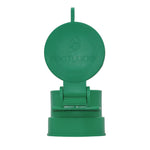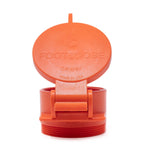You have no items in your shopping cart.
No one likes to think about wastewater and sewer systems. Unfortunately, there comes a time when these drainage pipes crack and break, forcing the homeowner to address the issue immediately.
Residential homes have a plumbing system designed to remove wastewater from the home, either through a septic tank system or a connection to the local municipality’s sewer system. The main drain that comes from the home and connects to either a septic tank or city sewer system is underground, coming from a lower area of the home. Occasionally, these underground plumbing lines become damaged or require trenchless sewer replacement.
Traditionally, a repair for an underground sewer pipe would require digging down to expose the issue. But now, there is a more efficient approach: the trenchless sewer repair.
What Is Trenchless Sewer Repair?
Over the last few years, trenchless sewer technology has dramatically changed the way underground pipes and sewer systems are repaired and replaced.
Trenchless sewer repair, or trenchless pipe repair, is exactly what it sounds like: a method of repairing or replacing a sewer pipe without any trenching. Trenchless drain pipe repair is a minimally invasive technique that repairs damaged drainage pipes without the need for massive excavation work that is often associated with sewer repairs. Common trenchless repairs include the pipe burst method and slip lining techniques for trenchless drain pipe repair and replacements.
This is often the preferred method of sewer repair, as it’s a less intrusive and more affordable process that can be done faster than a traditional, open-trench sewer or pipe repair. And the state-of-the-art equipment and premium materials used to repair these broken sewer pipelines are extremely durable and can prevent future issues with corrosion, rust, and other damage that can occur over the years.
Top Signs You Need Trenchless Sewer Repair
There are some obvious signs that a home has a damaged sewer pipeline somewhere underground. But there are also other, more subtle “symptoms” to be aware of:
- Consistent Backups & Blockages – Consistent backups, including gurgling or bubbling, in a toilet, tub, or sink can be a sign of an underground issue, such as tree root interference, a cracked pipe, or a pipe misalignment.
- Sewer Odors Outside – Smelling sewer gases around your home is a sign that a crack has occurred somewhere in the system. A sanitary sewer line should be airtight with the exception of venting in your roof to allow the sewage to move downwards.
- Sewer Seepage in Yard – One of the surest signs that something is wrong with the piping system is actual sewage pooling in a yard or outdoor area.
- Slow Drainage – Another sign that sewer repair is necessary is slow drainage. This can indicate a blockage or clogged drainage system, which will lead to greater issues in the future.
- Landscape Changes – Identifying an unusually luscious patch of grass could be due to an underground sewage leak. Sewage can act as a fertilizer and offer extra nutrients to the exposed area.
- Aged Septic Systems – For systems that are over fifty years old, corrosion and rust are natural issues that will eat into the pipe and cause damage to the entire pipeline. It’s important to be aware of this with older homes and keep an eye out for potential issues.

Common Trenchless Sewer Repair Methods
There are a few types of most commonly used trenchless pipe repair techniques:
- Pipe Burst Method – Pipe bursting is the easiest trenchless sewer replacement technique to employ with proper training. It involves breaking and expanding the existing pipe while simultaneously replacing it with a new high-density polyethylene (HDPE) pipe. Upon inserting a “bursting head” or “bullet” through the old pipe, the head will fracture the existing pipe while simultaneously dragging and laying down the new pipe behind it.
- Slip Lining – Slip lining is a trenchless rehabilitation technique that adds an epoxy liner to the existing sewer piping. This creates a pipe inside of a pipe without the need for complete removal of the initial one.
- Cured-in-Place Pipe Lining – This somewhat more complicated method, also known as CIPP, is the technical term for slip lining. A resin-saturated liner is placed inside the existing pipe. T then expands into place and is cured when heat is applied.
- Spray Lining & Brush Coating – This trenchless plumbing repair is similar to structural pipe lining, but instead of using a felt lining to make the trenchless repair, an epoxy or flexible polymer is sprayed into the inside of the damaged pipe.
Calling for Help If Needed
Successful trenchless sewer pipe repairs depend on the conditions of the damaged pipe. In some instances where the pipeline is collapsed, backpitched, or not properly graded, these repair methods aren’t a sufficient means of repair or replacement. Additionally, damaged sewer lines and drain pipes become more difficult to repair over time.
Trenchless drain repair tactics should only be conducted by trained technicians and plumbing experts. Do your research to find the right team to leverage trenchless sewer technology and remedy your piping problems today.










